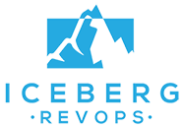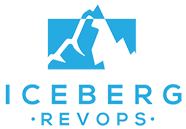As B2B companies grow, a natural consequence is the widening between the daily functions of go-to-market (GTM) teams.
Sharing customer data gets more complex, and operations spends more time cleaning up unexpected messes resulting from poor communication than they do building a strong operational infrastructure. This survival-mode response distracts GTM teams from focusing on revenue.
Revenue operations (RevOps) is the crossing guard for the new data intersection in town
RevOps is both a philosophy and practice. It’s a framework that connects the people, processes, data, and tech stacks across sales, marketing, and customer success so organizations have reliable data to predict revenue. It enables individual GTM teams to keep a sharp focus on their respective domains while RevOps builds big-picture technical and process frameworks that connect these functions to an organization-wide revenue funnel.
As soon as an organization has a go-to-market team, they should think about how to integrate RevOps. RevOps can be a single person or a team of people depending on the company’s size. The primary goal of RevOps is to ensure all go-to-market operations serve the revenue goals of a company. This requires dedicated resources with business savvy and technical abilities to build solutions that serve a defined business strategy.
Without targeted focus from RevOps, an organization’s attention on revenue takes a backseat to metrics defined by individual go-to-market teams.
Why RevOps now?
Customers expect more
Prospects flow in and out of a company’s sales funnel several times throughout a sales cycle. With small deal sizes taking an average of 3 months to close and larger deals up to a year, marketing and sales need to work together to close business and limit customer churn.
The observable growth of the RevOps market is evidence of real challenges experienced by B2B companies operating within the traditional GTM structure. It used to be acceptable for sales and marketing to function under their own set of priorities. But now that prospects sit in a sales funnel longer, they engage with sales and marketing multiple times. Tracking historical data and sharing it across individual GTM functions is a driving factor in making sure every touchpoint is relevant and worthwhile.
Account-based marketing requires tighter coordination
Account-based marketing (ABM) is an alternative to the wide net approach for generating leads. Instead, organizations using ABM focus on a smaller number of high-value opportunities and deliver account-specific campaigns. ABM increases the pressure on all GTM teams to know when they last spoke to a company, the nature of the conversation, and what to do to keep a lead moving through the sales funnel.
Even without ABM, the traditional hand-off approach (marketing gets the leads, sales closes them) is giving way to a whole new level of alignment. Just Google ‘should SDRs report to sales or marketing’ to see search results that show a lively debate between which function—marketing or sales—SDRs belong to.
What is the basic RevOps framework?
RevOps operates independently from other GTM teams by design. It behaves as an impartial, consensus-building body responsible for architecting data solutions across GTM functions so each team’s priorities align with big-picture business goals.
Business strategy
RevOps teams have the technical skills and business savvy to design and implement revenue-focused workflows across sales, marketing, and customer success.
RevOps asks big-picture questions like, “Why are we doing this?”
People, process, data, and technology
RevOps builds processes that connect teams and technology across an organization. Sales and marketing operations focus on team-level metrics while RevOps takes a holistic view and measures system effectiveness based on organizational-level goals.
Tool agnostic
Because RevOps sits independently of sales and marketing, it needs to have a powerful arsenal of tools to effectively serve these disciplines and help solve their unique operational challenges.
Revenue operations team structure
RevOps requires a minimum of two people.
- A business ops/strategy expert who works with an organization to understand its needs and architect solutions
- A systems expert who does the wrench work to build and maintain operations based on the recommendations provided by the business strategy expert
In a more mature RevOps framework where each GTM team has its own operations, all sales ops, marketing ops, and systems ops report to the head of RevOps. Grouping each team’s operations under a single entity offers direct visibility into how an organization’s collective operations serve its revenue goals. In this setup, operations for sales, marketing, and systems report to RevOps leadership. RevOps works independently yet collaboratively with sales, marketing, and customer success.

For an organization with RevOps, all systems and operations function as a single revenue-focused engine.
What specific challenges does revenue operations solve?
These are some of the most common issues RevOps helps B2B organizations work through.
1. Data cleanliness
Unreliable reports are one of the biggest challenges sales and marketing leaders deal with. Building a report in Salesforce is one thing, but trusting the data and presenting it in a leadership meeting is an entirely different and often uncomfortable story. Duplicate records, missing data, and a poorly defined infrastructure can all contribute to confusing reports and misleading conclusions.
A skilled revenue operations team can diagnose and correct data inaccuracies that happen many layers below what’s shown in a surface-level report. This work requires taking a close look at all data sources and understanding the human factors contributing to inaccuracies. The role of RevOps is to develop a workflow for both people and data that establishes boundaries for how data gets added and shared across go-to-market teams.
2. Lead tracking
One of the most common complaints from sales leaders is not knowing what happens to leads after they pass from marketing to sales. For growing companies, tracking lead status can be deceptively difficult. Before processes are put in place, sales reps often cobble together their own methods for keeping track of the leads they reach out to. Data gets stored in personal calendars or shared across spreadsheets with minimal governance. If a sales rep leaves the company or changes roles, important historical data can be lost. This makes it extremely difficult for sales leaders to accurately report on conversion metrics, marketing attribution, or get a clear picture of sales rep performance.
In this situation, RevOps can help organizations who don’t have a full sales operations skillset implement a lead tracking system that fits the natural flow of an organization’s top of the funnel activities and also serve as a foundation for better reporting on other funnel metrics that rely on tracking leads accurately.
3. Marketing attribution
Early-stage SaaS companies with high-velocity lead generation but a weak operational infrastructure usually struggle with tying opportunity creation back to specific marketing tactics. Leaders might be able to see how individual assets perform, but measuring meaningful data beyond asset-level performance can take a lot of time and manual effort.
Marketing attribution can fall under the jurisdiction of RevOps in that RevOps will own the project of working across sales and marketing to implement the tools and workflows that capture far-reaching insights like lead generation at the campaign level and by content type. Business decisions related to marketing ROI should be based on high-level patterns, not microscopic views. Organizations can use RevOps to develop the systems that serve up valuable marketing ROI data in a digestible dashboard.
In this case study, Iceberg worked with TaskRay to build a new marketing attribution dashboard that gives TaskRay’s leaders immediate visibility into marketing tactics and resulting leads.
4. Pipeline visibility
Accurate sales forecasts are the ultimate sign of a well-oiled revenue-generating engine. The ability to predict revenue reliably gives organizations the ability to set and hit growth targets, manage their resources, and scale in a controlled manner.
That said, according to a LeanData report, consistent revenue growth is still a challenge for 78% of B2B companies.
Data needs to be captured and tracked from the top of an organization’s sales funnel to the bottom. It’s no wonder that without a robust infrastructure, sharing data across sales, marketing, and customer success in a seamless way can become impossible.
RevOps acts as an impartial entity to connect the GTM teams so they function properly as a single revenue-generating unit.
5. Knowledge gaps
Sales and marketing operations typically have skillsets aligned to the priorities within those functions. For organizations with relatively small go-to-market operations, there are bound to be knowledge gaps related to technology and business expertise. RevOps covers those gaps so organizations can build on a strong foundation.
How do you know when your organization needs RevOps?
Organizations need RevOps as soon as they have dedicated GTM operations. Once you have sales and marketing folks, even a small team, having a qualified operations team managing the tech stack and operations is critical.
Here’s why.
Visibility
Organizations need visibility to run effectively. Early-stage SaaS companies are at the hands of the board and depend on accessible and reliable reports to show pipeline health. As the organization grows, data quality can suffer without a robust operations infrastructure.
System ownership
Without a dedicated resource, sales and marketing teams end up owning systems. This is bad for several reasons. They may not be qualified ops professionals, or if they are, they spend more time on the ops side versus actual sales and marketing. This can also lead to implementing too many systems in firefighting mode that distract from revenue-generating activities.
Gaps widen over time.
Without fail, any operational gaps will grow as the organization grows.
Should you keep RevOps in-house, or outsource?
Short answer: it depends.
Budget
At a minimum, a qualified RevOps team consists of a systems admin and an experienced leader who can design systems to meet business needs. Typically this takes no less than $250K to bring these people on board. If a company has the budget, going the full-time route is a viable option.
For other cash-strapped SaaS organizations, hiring in-house may be cost-prohibitive. Outsourcing RevOps can be a way for companies to tackle important internal projects, save money, and keep their own internal resources focused on customers.
Time
Workload is another important consideration for weighing in-house vs. outsourced RevOps. If an organization adds a RevOps team to its headcount, there needs to be enough work to keep that team busy.
Outsourcing can be a good solution for organizations that have specific, high-priority projects to work on. It also enables companies to fast-track the sophistication of their operations until they can afford to hire qualified individuals.
Check out more content on RevOps and how to build rock-solid operations.


